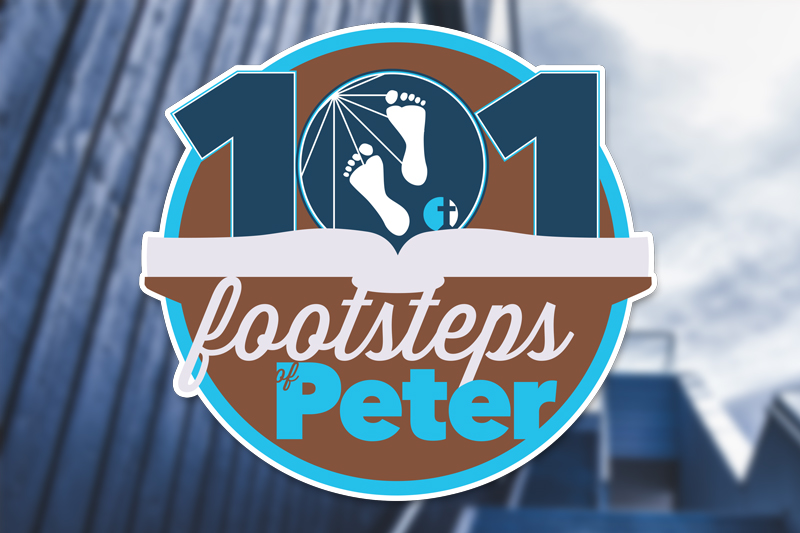“An Empty Tomb” – MARK 16:1-20
An empty tomb.
A resurrected Christ.
An ascended Lord.
Just like that Mark’s gospel concludes with a rapid fire sequence. Of all the miracles performed by God through Jesus, the resurrection is the most significant. Death is a natural occurrence, but resurrection from death is supernatural – a miracle. In this miracle God transformed apparent defeat into astounding victory. The teachings, miracles and predictions of first 15 chapters of Mark would have no doubt faded into obscurity if it all ended when Jesus’ lifeless body was placed in the rock-hewn tomb. As God carefully planned, the Passover “forced” a time buffer when the family was unable to properly and fully prepared the body because of the Sabbath (16:1), but at the earliest possible moment – dawn on Sunday – Mary, Mary and Salome dutifully went to the tomb (16:2).
The Christian needs to walk down the path to the empty tomb every day of our lives in Christ!
How awesome is it that God knew they would come first thing (16:5). The stone was not rolled away to allow Jesus to come out, it was rolled away to allow witnesses to see in (16:3-5). While Jesus may have been deliberately coy in some of His predictions and proclamations, there would be no mistaking the events of the resurrection (16:6-7). God sent this “young man” dressed in white to explain what had happened and what they were to do. They already knew He had been crucified, but “He is risen” must have hit them with the weight of the stone that had covered the entrance to the tomb. Instead of the natural uncertainty that would be expected, they now had the information and instructions to begin the final march toward God’s greatest redemptive creation … the church. Still, they were overwhelmed (16:8).
Put yourself in their shoes as you walk away from that empty tomb today.
Then Jesus began the process of appearing to folks to reveal this miracle of miracles. The resurrected Lord appeared to Mary Magdalene (16:9) and the two disciples on the road to Emmaus (Mark 16:12, Luke 24:13). Finally, He appeared to the eleven (16:14, 16:7), a number which wonderfully included even Peter. The message was hard to believe. Fear struck the three ladies (16:8). Unbelief struck the disciples (16:11, 13). Then He was there in their midst (16:14) and reproved them. They should have seen it coming because He told them He would rise again. But, it was just so unnatural. Even though it was foretold, it was just so unexpected. How could God do this? Why would God do this? Wasn’t there another way to save the souls of men? Perhaps there was – in theory – another way, but God is a God of unfailing consistency and a sacrifice was required for forgiveness. Only our great God would offer us a living sacrifice!
Think on that as you fellowship with the Risen Savior today!
Just before He ascended to heaven (16:19), Jesus gave a preview of the birth and spread of the church He died to purchase. Many more miracles would be wrought to convince people and melt hard hearts – just read the book of Acts (Mark 16:17-18). Believers acted upon the word of the Savior and carried His commission to the lost world (16:15, 20). How sublime … He spoke and they responded in humble obedience. The farther away from the tomb we get, the farther away we get from the words Jesus spoke. Jesus clearly proclaimed that “he who believes AND is baptized shall be saved” (16:16). We live in a religious culture that clearly proclaims that “he who believes and is saved should be baptized”. Why distort such a simple command?
Maybe we should look again to the ascended King of Kings.
Have you ever paused to wonder why people can believe He is risen, but they refuse to believe He calls sinners into the waters of baptism (16:16). Paul calls baptism a burial (Romans 6:2-5, Colossians 2:12).
Think a moment.
Why was Jesus “buried”?
God could have “raised Him from death” as soon as He was taken down from the cross. As God desired, Jesus died for our sins so that believers would obediently die to their sins. As God desired, Jesus was buried, then raised to new life. According to God’s plan, without an empty tomb there was no resurrection. Since there is a death and a resurrection for both the Savior and the saved, should there be an empty tomb for both, as well? If so, then logic and scripture demands a death, burial and resurrection – not a death, resurrection and burial!
As you walk to the tomb of Jesus, ponder whether or not there is an “empty tomb” where YOU were laid when you died to your sins that was vacated as he raised you to new life.


Comments are closed